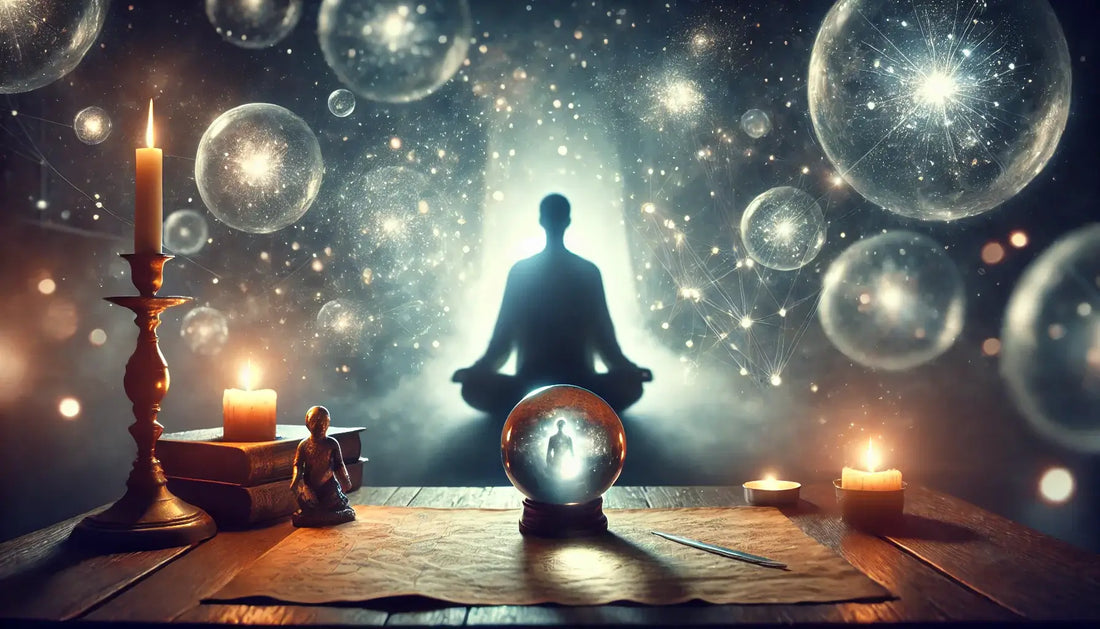
Investigating Clairvoyance: Understanding the Mystical Art of Clear Seeing
Share
Clairvoyance, often referred to as "clear seeing," is a psychic ability that allows individuals to perceive information beyond the scope of the five physical senses. This extraordinary gift involves seeing events from the past, present, or future and perceiving people, places, or things that are otherwise out of the normal range of sight. Throughout history, clairvoyance has been a subject of fascination, mystery, and controversy. Many spiritual practitioners and psychics regard clairvoyance as a real and tangible ability, while skeptics and researchers continue to question its authenticity and mechanics.
The Mechanisms Behind Clairvoyance: How Does It Work?
The study of clairvoyance is rooted in the broader field of parapsychology, where it is typically classified under the umbrella of extrasensory perception (ESP). ESP refers to the ability to receive information through means other than the known physical senses. Among the various theories proposed to explain how clairvoyance works, some common ideas include:
-
Extrasensory Perception (ESP): Clairvoyance is often described as a form of ESP, enabling the mind to access knowledge that cannot be obtained through ordinary sensory channels.
-
Precognition: Clairvoyance may involve a heightened awareness of future events, allowing individuals to foresee outcomes before they unfold.
-
Remote Viewing: This aspect of clairvoyance involves the ability to "see" distant places, people, or objects without being physically present. Remote viewing has been tested in various scientific studies, with mixed results.
Spontaneous Clairvoyant Experiences: Unexplained Moments of Insight
Many accounts of clairvoyance come from individuals who report spontaneous experiences, often occurring during times of intense emotion or crisis. For example, someone might claim to have seen a vision of a loved one shortly before learning that they passed away, or they may dream about an event that later becomes reality. In some cases, people report vivid clairvoyant episodes triggered by emotionally charged or traumatic events, which appear to heighten their sensitivity to psychic phenomena.
Researchers studying such experiences have found that these episodes often have strong emotional underpinnings. Spontaneous clairvoyance may occur during dreams, meditative states, or even when someone is engaged in a seemingly mundane activity. While anecdotal evidence abounds, spontaneous clairvoyant experiences are difficult to study in a controlled environment, adding to the mystery.
Scientific Studies of Clairvoyance: Investigating the Evidence
Scientific inquiry into clairvoyance has yielded both promising and inconclusive results. One notable experiment in parapsychology is the Ganzfeld Experiment, designed to test for evidence of ESP, including clairvoyance. During the experiment, participants are placed in a state of sensory deprivation, intended to enhance psychic abilities. They are then presented with visual, auditory, or symbolic stimuli to see if they can accurately describe or perceive information from afar.
The results of Ganzfeld experiments have been mixed. Some studies suggest that participants exhibit higher-than-chance accuracy in identifying remote images or information, supporting the idea of ESP. However, critics argue that these results are not consistent or repeatable enough to constitute solid scientific proof of clairvoyance.
Skepticism and Controversy: The Debate Around Clairvoyance
Despite widespread belief in psychic phenomena, skepticism remains a dominant force in the discussion of clairvoyance. Skeptics argue that many alleged clairvoyant experiences can be explained by more mundane factors, such as coincidence, subconscious cues, or psychological suggestion. In some cases, individuals may unconsciously use information they've picked up through ordinary means, misinterpreting it as a psychic experience.
Furthermore, instances of fraud and exploitation in the world of psychic readings and clairvoyance have fueled doubts about the legitimacy of this ability. Some famous "clairvoyants" have been exposed as charlatans, using trickery or manipulation to convince others of their supernatural powers.
The Power and Mystery of Clairvoyance
Whether or not clairvoyance can be scientifically proven, the practice continues to hold a significant place in the spiritual and metaphysical communities. Many believe that clairvoyants possess a unique gift for seeing beyond the veil of physical reality, offering guidance, insight, and comfort to those seeking answers. Practitioners often use clairvoyance as a tool for healing, spiritual development, and connection to higher consciousness.
It is crucial for those interested in developing or exploring clairvoyant abilities to do so with respect, caution, and integrity. Working with a reputable and experienced teacher or mentor can provide valuable guidance, especially when it comes to ethical considerations and boundaries.
The Journey of Understanding Clairvoyance
Clairvoyance remains a complex and fascinating phenomenon that has intrigued humanity for centuries. While modern science has yet to fully validate the existence of clairvoyance, countless personal accounts suggest that something extraordinary may be at play. Whether viewed through a spiritual lens or subjected to scientific scrutiny, clairvoyance continues to challenge our understanding of reality and the mind's untapped potential.
For those seeking to explore clairvoyance, it is essential to maintain an open yet discerning mindset. Regardless of where you stand on the issue, clairvoyance provides a powerful reminder that there is much more to the world than meets the eye—and that the boundaries of perception are still waiting to be discovered.
